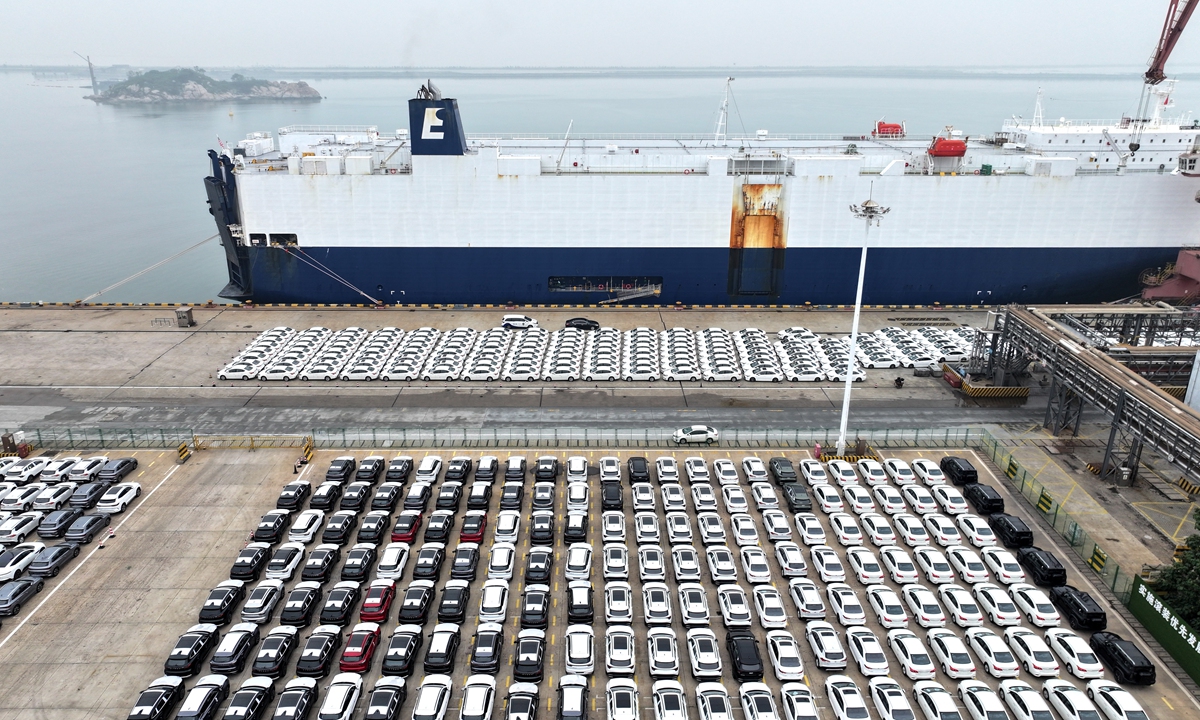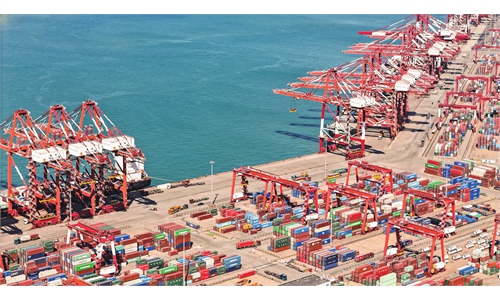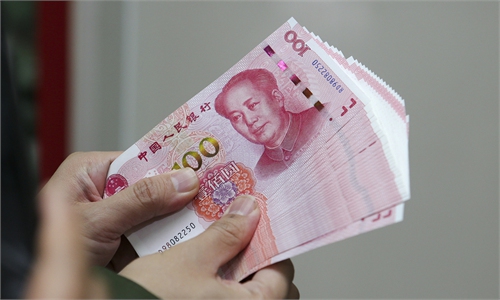Chinese localities set new records in foreign trade in H1, injecting impetus into world
Growth momentum continues to inject impetus into world

A cargo ship docks at a berth to load export vehicles at a terminal of Lianyungang Port in East China's Jiangsu province on July 11, 2024. China has exported about 485,000 cars to the world. Photo: VCG
Several Chinese provinces, cities and regions set new foreign trade records in the first half of the year, with an improvement in both imports and exports. These trends contributed to the stability of global supply chains and injected more impetus into the world economy.
Outstanding performances by many regions demonstrated China's economic resilience and capacity despite external uncertainties, and the bustling trade activities strongly denied the "decoupling" efforts led by the US, experts said.
On Wednesday, South China's Guangdong Province unveiled its foreign trade data for the entire province, as well as a subset covering the province's nine cities that are included in the Guangdong-Hong Kong-Macao Greater Bay Area.
In both cases, first-half exports and imports set new records.
Total first-half foreign trade for the nine cities stood at 4.2 trillion yuan ($578.9 billion), accounting for 19.8 percent of the country's total trade.
For the province as a whole, first-half foreign trade stood at 4.37 trillion yuan, accounting for 20.6 percent of the country's total trade in the period.
Notably, the province's ship exports grew 70.7 percent year-on-year, with exports of electric vehicles surging 78.3 percent and those of containers up 104 percent.
Foreign trade in China's western region also showed a remarkable performance, with faster growth in imports and exports to China's top trading partner ASEAN, as well as to Central Asia, Latin America, Africa and other emerging markets.
The figure for Northwest China's Xinjiang Uygur Autonomous Region stood at 220.6 billion yuan, up 48.4 percent year-on-year.
Both exports and imports set new records.
Total merchandise trade of Southwest China's Xizang Autonomous Region amounted to 3.8 billion yuan, up 132.4 percent, and the growth rate ranked first in China.
South China's Guangxi Zhuang Autonomous Region's total trade rose 12 percent to 345.28 billion yuan. The region's share of foreign trade with ASEAN increased significantly, rising 26.7 percent. Guangxi's trade with Vietnam maintained a strong growth of over 30 percent.
In the first half, foreign trade of the country's northeastern region was the highest in history, with the value of 613.86 billion yuan, up 1.5 percent year-on-year.
"Record high foreign trade across the country has become the norm thanks to the continuous development of China's economy and the recovery of the external market," Bai Ming, a research fellow at the Chinese Academy of International Trade and Economic Cooperation, told the Global Times on Thursday.
The balanced development of foreign trade in various regions and the rapid development of trade ties with emerging markets showed the diversification and resilience of China's foreign trade, said Wang Peng, an associate research fellow at the Beijing Academy of Social Sciences.
Wang told the Global Times on Thursday that the country's foreign trade was shifting from traditional labor-intensive products to high-technology and high-value-added products, reflecting the upgrading of China's industrial structure and the optimization of its foreign trade structure.
China set a new record for merchandise trade in the first half, with imports and exports together rising 6.1 percent to 21.17 trillion yuan.
"As a globally important manufacturing center and consumer market, China's solid growth in foreign trade has provided an important impetus for the global economic recovery. Moreover, the country's strong manufacturing base has provided the world with a large number of intermediate and final consumer goods, and ensured a stable supply in the global market," Wang noted.
China has actively explored emerging markets and promoted the diversification of international trade. The country's trade relationship with ASEAN, Central Asia, Latin America, Africa and other regions has become increasingly close, contributing to the optimization and balance of global trade patterns, Wang noted.
Moreover, China's expansion of imports has brought more opportunities to other countries, facilitated the optimal allocation of resource factors on a global scale and given a boost to other economies, Bai said.



